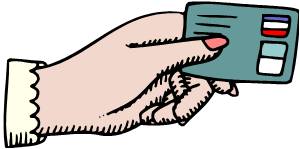Entries Tagged 'case studies' ↓
December 16th, 2013 — case studies, Testimonials
 Author: Sally Ormond, Copywriter and MD at Briar Copywriting Ltd. Follow her on Twitter and Google+
Author: Sally Ormond, Copywriter and MD at Briar Copywriting Ltd. Follow her on Twitter and Google+
Testimonials are wonderful things.
They offer potential clients an insight into your service and approach and illustrate the benefits of your product/service in a real life situation.
Listing them on your website, or dotting them amongst the rest of your copy is OK, but you could make more of them.
Turning testimonials into stories
There’s nothing better than a good old-fashioned story to get your readers engrossed.
Let’s face it the testimonials you receive from customers are like the wrap up of a story. They’re just missing the beginning, middle and protagonist.
But if you were to add that information, hey presto, your testimonial suddenly turns into a case study.
Weaving a story around the testimonial is easy; just make sure it’s factual.
First, set the scene – give some background to it, who is the client and why did they come to you? This is where you explain the problem they had.
Now in comes the protagonist – that’s you, or at least your product or service. Think about why they came to you (don’t make this bit up, if you know write about it, otherwise skip it). Write about how you approached the problem and what you did to solve it.
The happy ending – now your reader wants to know the outcome. This is the bit they’re concerned about; what did your solution do for your customer? Hopefully, the testimonial you received has a bit more substance to it than just “they were really nice and helped me, thank you.” In this section you want to show the reader how your solution helped, using their testimonial as a summary of the whole case study.
Now, your testimonial has become a story that shouts about your service, giving it a real life context that is meaningful and that your reader can relate to.
Plus, it’s a great way to add fresh content to your website.
November 30th, 2011 — case studies, copywriter, copywriting, copywriting tips, Testimonials
 When companies write their own copy, they tend to fall at a couple of hurdles when it comes to its effectiveness:
When companies write their own copy, they tend to fall at a couple of hurdles when it comes to its effectiveness:
- It’s full of we
- It’s a blatant sales pitch
The first point is covered in this very sanitary blog post, so this post will concentrate on the second.
How do you convince your reader to buy something without being blatant about it?
Before I answer that, let’s take a look at the problem itself. When you’re writing about your own business, you’re keen to get across every last detail to your reader.
You want to tell them all about the features (sadly forgetting the crucial benefits) and then you’ll proceed to tell them it’s amazing, brilliant, superb and fantastic in varying font sizes, colours and turns of phrase.
The problem with that is the reader will instantly recognise your sales pitch and if there’s one thing people don’t like, it’s being sold to.
So if you want to get them to buy from you, you’ve got to be a bit more cunning than that.
How to sell without selling
As a copywriter, I use 3 techniques to get around this particular problem. Each one will help you sell your products or services without the reader recognising an in-your-face sales pitch.
Let’s take a look at the first…
1. Storytelling
As kids, we’ve all grown up listening to stories. We naturally warm to them, listen to them and learn from them, which is why it’s such a powerful way to communicate the benefits of your products or services to your readers.
By reading about a situation and how your product helped someone, will sell the benefits to your reader without them realising they’ve just been sold to.
That’s because they have seen how your product/service works within a given scenario and how it benefits the user.
Placing it within a content they can relate to, is a powerful way of selling without obviously selling.
2. Testimonials and case studies
Whether you use a testimonial from a client, or use their story as part of a case study, because it is a real life story, your reader will read it and take more notice of it than anything you write.
After all, the authors of the testimonials have no incentive to lie about your service, so they are seen as trustworthy insights into your business.
Another powerful way to use testimonials is by video. There are a few people who take the view that testimonials can be written by anyone and where’s the proof that the person sighted is the person who wrote it. But if you have a video testimonial, it will tend to blow the sceptics out of the water.
3. Teaching
Does teaching really work?
Of course it does.
Whether you offer a free sample, video ‘how to’, or an offer, these all act as bait to get your reader hooked.
People love something for nothing, and if it means they get to see how great your product or service is first hand, they are more likely to buy from you.
Over to you
Do you use any other techniques to avoid the ‘hard sell’ approach?
Perhaps you’ve had particular success with one of the above. If so, leave a comment below, I’d love to hear from you.
September 27th, 2010 — case studies, copywriter, freelance copywriter, marketing
 In any sales relationship, trust is probably the most important factor. Without trust, you are unlikely to make a sale.
In any sales relationship, trust is probably the most important factor. Without trust, you are unlikely to make a sale.
Therefore when producing copywriting for any marketing collateral you have to be able to convey trust.
If you blog, you’re laying your soul bare for all to read. Your posts are very personal so your reader feels as though they know you through your words. And it is that connection you have to try to replicate in your sales writing.
Too often you see dire sales letters – they’re full of hype and practically shout at the reader BUY MY PRODUCT NOW!
So it’s not surprising when they don’t yield great results.
People have a natural resistance to buying. You are asking them to part with their money so you have to show them you’re not a charlatan and you’re not going to rip them off. You have to convince them to trust you – not something that’s easy to do through text.
To help you get your sales message across in a non-shouty and threatening way, why not try one of these three techniques?
Tell them a story
If you want to tell someone about a product you are selling, don’t rely on bold or colourful lettering, just tell them about it.
Using the tried and tested story telling style will help you build credibility in the eyes of your reader. Tell them why you created the product weaving in your credentials (number of years experience, clients you’ve helped etc.) to your benefits driven copy.
This approach will help you get your benefits in first to instantly start to break down their buying resistance. Plus, mention of your experience, clients and motivations will help convince them you’re genuine.
It was all a mistake
If you happened upon the idea for your product or you were involved in doing something that others wanted to be part of, telling your reader that your service/product evolved by chance will show them the thought process behind your product, how it has helped others and – well, if they thought it was great, it must be.
Of course your story has to be true and credible if it’s going to work. This approach is an excellent way to make a human connection with your reader.
This is one of the most powerful sales tools there is. Writing about a client’s experience of your product/service will show the reader exactly what can be achieved. As with the other techniques this has to be based on fact and written with your client’s permission.
Name names, show quantifiable results and use direct quotes from your customer to add weight to it.
This type of real life illustration will really resonate with your reader.
As you can see, selling is about showing the benefits, breaking down resistance and convincing them to buy.
Once you’ve put your ‘sales pitch’ across don’t forget to add in your call to action.
Sally Ormond – freelance copywriter
July 19th, 2010 — case studies, copywriter, freelance copywriter
 The use of case studies within your marketing strategy is a great way to boost your business profile whilst showing customers exactly what your product can do for them. Plus, because they use real life situations, your sales pitch gains extra credit.
The use of case studies within your marketing strategy is a great way to boost your business profile whilst showing customers exactly what your product can do for them. Plus, because they use real life situations, your sales pitch gains extra credit.
One way of creating powerful case studies is to combine an interview with the person involved. Quotes and personal insight will add weight. But interviews aren’t only for case studies, as a copywriter I use them extensively in projects such as newsletters, press releases, internal communications and news items.
The interview can generate a frame work from which the rest of the case study hangs and the quotes used substantiate claims whilst injecting your writing with life.
So how do you go about conducting an interview to make sure you get the most out of it? Well, that’s just what I’m about to tell you.
Tips to conduct an effective interview
1. Do your research
This one should be pretty obvious.
As with any form of copywriting, you should always ensure you do your research before you start. Whether it’s a website, brochures, other interviews, press or magazines, spending the time to read about your interviewee will prevent you from asking them the same old questions they always get asked. It will also help you find angles for your interview.
2. What’s it for?
Asking a load of questions isn’t going to generate a great interview. Before you begin think about why you are doing the interview. What is it that you want to get acorss? If you are interviewing a customer who is using one of your products, make sure you ask them about it. You’ll want to know why they chose it, what has it done for them? Information that your reader is going to want to know.
Once you have a clear focus in mind, make sure you stick to it rather than getting side tracked.
3. How?
You must also decide how it is to be conducted. By far the most effective way is face to face but that isn’t always practical (or cost effective). Usually I opt for a phone interview. I wouldn’t recommend an email interview as it is really difficult to get great quotes. Most people will refine their answers until you get something quite impersonal. If you can chat with your subject, either face to face or over the phone, you are more likely to build up rapport and get some great quotes.
4. Schedule it
Whenever I have to arrange an interview I always like to email in the first instance. In the email I explain who I am (and make sure all my contact details are included), and why I want to do the interview. Rather than asking them for a convenient time and date – which can lead to a constant stream of emails bouncing backwards and forwards as you try to agree on a date – I tend to offer a couple of alternatives and ask them to choose one.
It’s always wise to send them an email reminder a couple of days before and don’t arrange back to back interviews. Firstly, you won’t know how long each one will take. And, secondly, they are quite tiring.
5. What to ask?
Before you begin your interview (and after you’ve done your research), make a list of questions. Try to avoid closed questions as they won’t get you anywhere and make sure you always have the reader in mind. Make sure the questions you ask are relevant to the purpose of the piece you are writing and ensure you ask for answers in ‘language our readers can understand’ especially if you are dealing with a complex subject.
The best way to generate great quotes is to ask your interviewee to tell you a story about the process, what their opinion or impression was of it. That type of question will get them to open up and talk more freely about the subject.
6. What do I do now?
I don’t know about you, but I’m very bad at shorthand. Plus I find if I’m trying to take notes during the interview, I don’t concentrate fully on the answers I’m being given. Therefore I record my phone interviews (of course, with my subjects permission). I don’t have any fancy tech, just a speaker phone and a digital recorder which then allows me to upload the file to my PC.
Once the interview is completed I transcribe it. You can get this done for you if you prefer, but I find doing it myself helps me to get a better feel for the material. Plus it’s a great way to put a mental structure together for your case study and, as you type, you can highlight key information and great quotes.
So there you go. Interviews are invaluable but can be a bit scary if you’ve not done many before. But don’t worry about it (your subject will also be nervous) – open your interview with a few light questions to put them (and you) at their ease.
Just remember – research before hand, make a list of relevant questions and engage with them. If you sound disinterested they’ll close up. Listen, absorb and react and then you’ll get great material to produce a killer case study.
February 1st, 2010 — case studies, copywriter, copywriting, copywriting tips
Normally, when I talk to you about copywriting I hark on about how  important it is to write about the benefits of the product you are trying to sell.
important it is to write about the benefits of the product you are trying to sell.
That’s because benefits are the vital element to make your reader understand that you product is for them and so are a copywriter’s best friend.
However with the Case Study you have the prime opportunity to bring your benefits to life by dramatising them.
It’s not an easy road
Writing case studies isn’t easy, but the time and effort you spend honing them will be well worth it.
Testimonials are great, but case studies will carry more weight.
Why?
Because they are perceived as being truthful; you are telling your reader a story. Your case study will have a hero (your customer), a predicament (the problem they face), a narrative (what you did and why) and finally a happy ending.
So how can you be sure you write a compelling, interesting and relevant case study?
7 tips to creating a winning case study
Don’t make the mistake of thinking that writing a case study is simple. It isn’t. There are a lot of bad ones out there so I’ve put together a few tips for you to help you create a winner.
- Tell it from your customer’s perspective otherwise it will just come across as a piece of hype. Readers will be able to relate to your customer, after all they may well be facing the same problems. Let’s face it they probably are – if they weren’t why would they be reading your case study?
- Use real people in your photos if you can. Not everyone will be willing to do that but it adds weight to your case study if you can.
- Include as many facts and figures as you can. And give specific examples of what you did to solve their problem. Wishy-washy information will get you absolutely nowhere.
- People love pictures so use shots of your customers premises, machinery or whatever is relevant to your case study. This will add a sense of realism that you can’t achieve by using stock images.
- Let your client speak directly. Include plenty of relevant quotes and make sure you attribute them to the right person (including their full name and position). This is a great opportunity to present a new voice to your case study – try and use their language to add authenticity.
- Give it a good structure – a brief introduction to your customer, what their problem was, how you solved it, what the outcome was and future implications for them/their business.
- Make sure it is clear how they benefited from your product/service/expertise. This is crucial. If you tell your reader how your customer benefited they will associate that with how THEY will also benefit.
Now for things you don’t want in your case study
As I’ve already mentioned, your case study is your opportunity to prove to your readers that you can do something amazing.
If you want to sell something to a specific audience, you’ve got to prove to them they need it and that you’re good – very good.
Below are list of 4 elements you don’t want in your case study:
- A beginning that talks at length about your customer’s business. If you want to add information about their company, turnover or premises etc., put it in boxes at the side of your case study.
- Challenge and solution but without the results. Proof is the name of the game and without results you have proved absolutely nothing.
- No quotes. Your customer’s voice is essential. They need to speak to your reader and tell them precisely what you did for them and the results they have seen as a result.
- Dull narrative. Long words, complex sentences, excessive jargon, and an awkward flow create a boring case study. If no one wants to read it how can you prove yourself to them?
More and more people out there are taking an increasingly cynical view of “marketing speak”. Unsubstantiated claims are boring and damaging to your business.
People love to read about other people and their experiences and case studies provide the perfect vehicle for a friendly and non-salesy look at your business. Of course they are also superb vessels for a bit of stealth marketing – but hey! You’re proving what you do works, there’s no hard sell.
Sally Ormond – freelance copywriter
 Author: Sally Ormond, Copywriter and MD at Briar Copywriting Ltd. Follow her on Twitter and Google+
Author: Sally Ormond, Copywriter and MD at Briar Copywriting Ltd. Follow her on Twitter and Google+
 In any sales relationship, trust is probably the most important factor. Without trust, you are unlikely to make a sale.
In any sales relationship, trust is probably the most important factor. Without trust, you are unlikely to make a sale. The use of
The use of 





